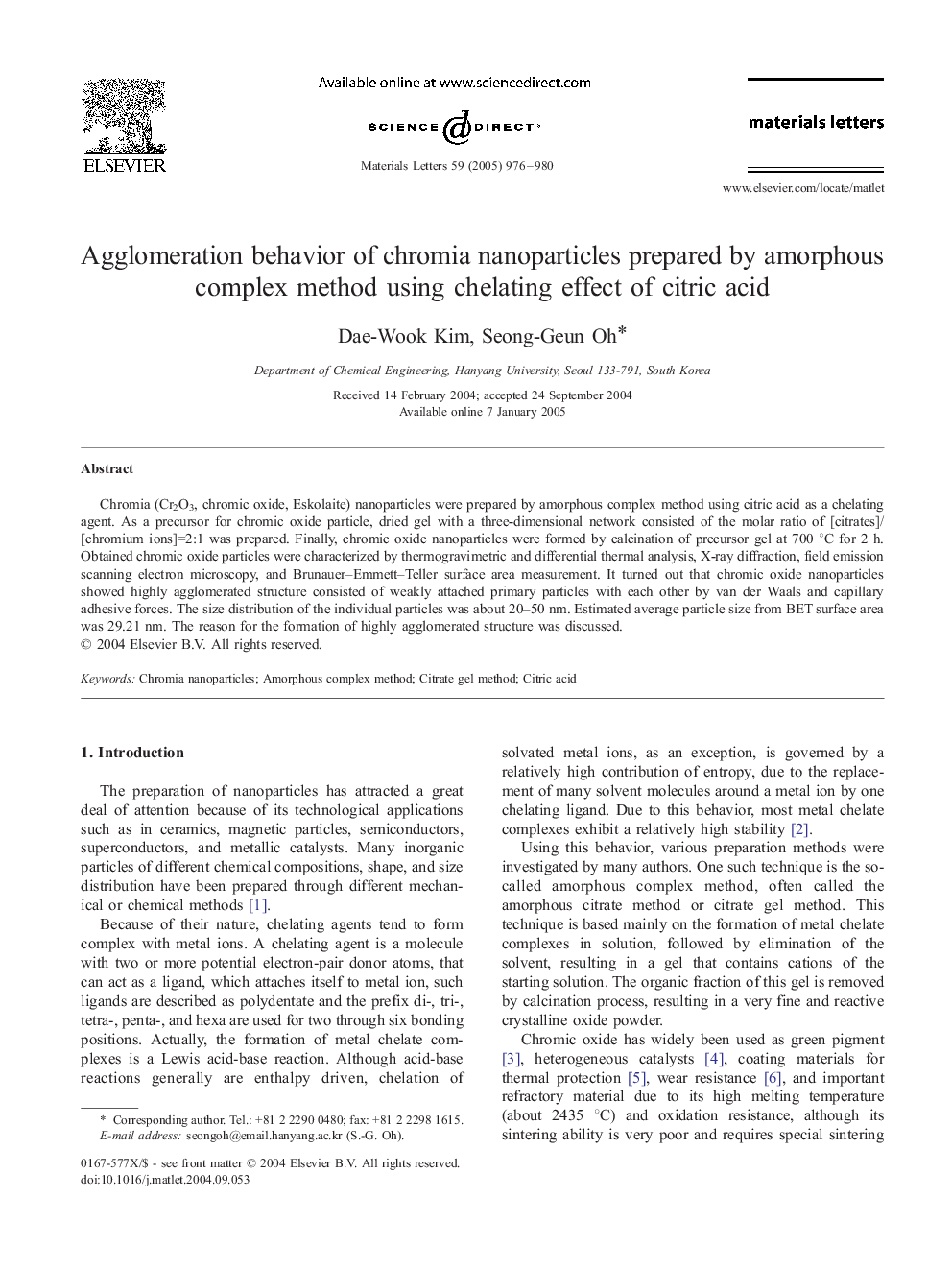| Article ID | Journal | Published Year | Pages | File Type |
|---|---|---|---|---|
| 9808669 | Materials Letters | 2005 | 5 Pages |
Abstract
Chromia (Cr2O3, chromic oxide, Eskolaite) nanoparticles were prepared by amorphous complex method using citric acid as a chelating agent. As a precursor for chromic oxide particle, dried gel with a three-dimensional network consisted of the molar ratio of [citrates]/[chromium ions]=2:1 was prepared. Finally, chromic oxide nanoparticles were formed by calcination of precursor gel at 700 °C for 2 h. Obtained chromic oxide particles were characterized by thermogravimetric and differential thermal analysis, X-ray diffraction, field emission scanning electron microscopy, and Brunauer-Emmett-Teller surface area measurement. It turned out that chromic oxide nanoparticles showed highly agglomerated structure consisted of weakly attached primary particles with each other by van der Waals and capillary adhesive forces. The size distribution of the individual particles was about 20-50 nm. Estimated average particle size from BET surface area was 29.21 nm. The reason for the formation of highly agglomerated structure was discussed.
Keywords
Related Topics
Physical Sciences and Engineering
Materials Science
Nanotechnology
Authors
Dae-Wook Kim, Seong-Geun Oh,
